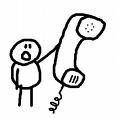 For the first time over a six-month span, encompassing story pitches for four different clients, I reached one particular reporter yesterday at the Chicago Sun-Times.
For the first time over a six-month span, encompassing story pitches for four different clients, I reached one particular reporter yesterday at the Chicago Sun-Times.
She had never responded to any of my prior messages, neither my well-crafted and eminently timely e-mails nor my professional and succint voicemails directing her attention to those e-mails.
Of course, when she picked up the phone this time around, I read her the riot act, chastising her for being so inconsiderate and failing to recognize a helpful publicist when one was right under her nose.

(If you believe that tale of mine, then let me recommend you trust all your life savings with my financial adviser, Bernie Madoff.)
In reality, after introducing myself to the reporter, I asked if she had 30 seconds to hear why I was touching base. Politely, she replied that she needed to make a phone call right away.
“I understand entirely,” I said. “I just wanted to let you know that I’ll be sending you a story idea that I think you’d be interested in. I’ll follow up with you another time.”
Before I hung up, she hastened to make sure I knew her e-mail address.
This vignette underscores three points I make regularly to my clients, as well as audiences that attend my PR workshops:
1. As the individual making the story suggestion, you want to get off the phone before the reporter, editor or producer really wishes you were out of their face.
This no-nonsense, fast-paced style respects the reality of the media member’s time, and it sets you apart from the many long-winded blowhards that place a stress on their already-burdened schedule. Asking if a reporter is on deadline signals to them that you know their world, and sets you on a path toward establishing that you are a peer worthy of respect and consideration.
2. Rarely do you get a reporter to agree to pursue a story in the phone call. He or she will always want to review more information before making such a decision.
So the phone call’s purpose is to plant a promising seed (that a follow-up e-mail will nurture in short order), not bring home the harvest a few moments after the seed has gone into the soil.
3. Except in rare instances, whether your call results in a conversation or only a voicemail, always be ready to follow up immediately (within 60 seconds is a good idea) with a well-written news pitch or release.
Securing media coverage is the result of winning small victories along the way, and one such triumph is having the reporter refrain from deleting your e-mail without giving it more than a glance.
If they recognize the e-mail as coming from a professional who also took a few moments to phone them, then your story’s chances of moving beyond the embryonic stage climb exponentially.
For related PR advice, see Inside Edge PR Tips: 4 Myths To Combat Along the Way.
